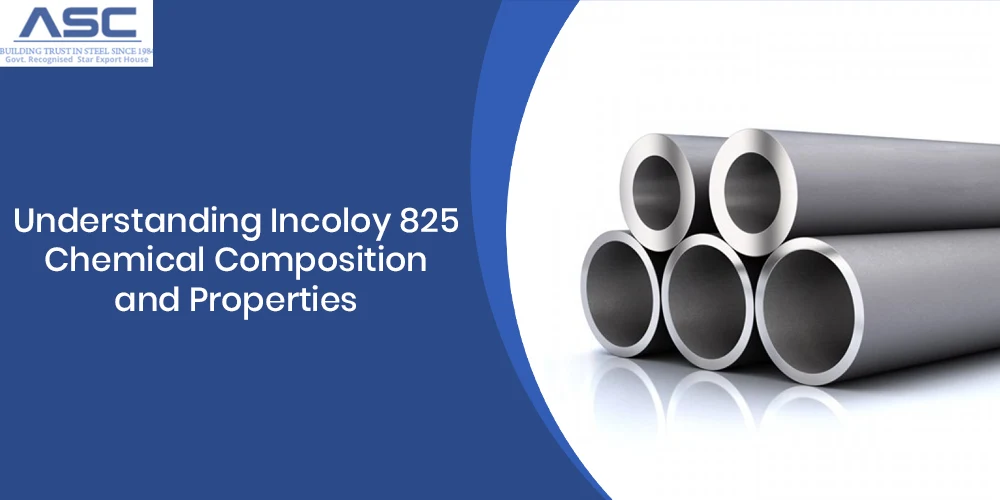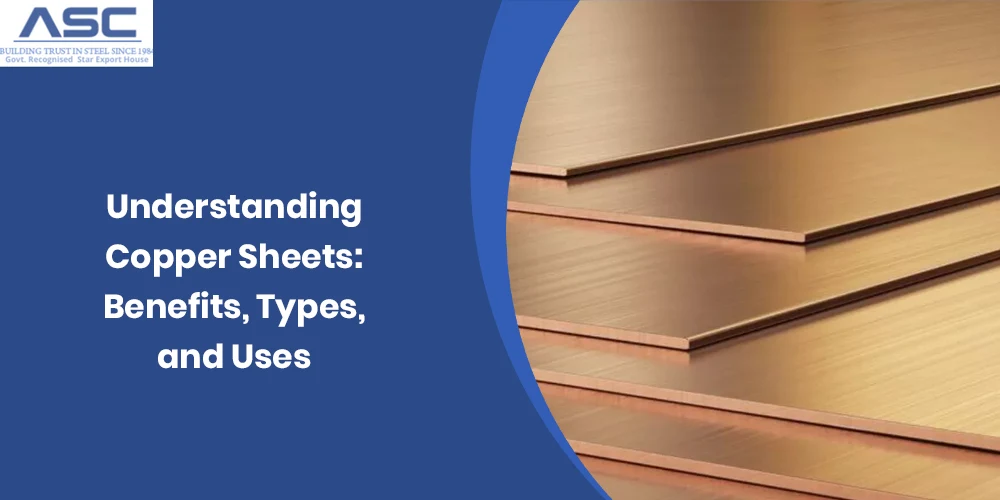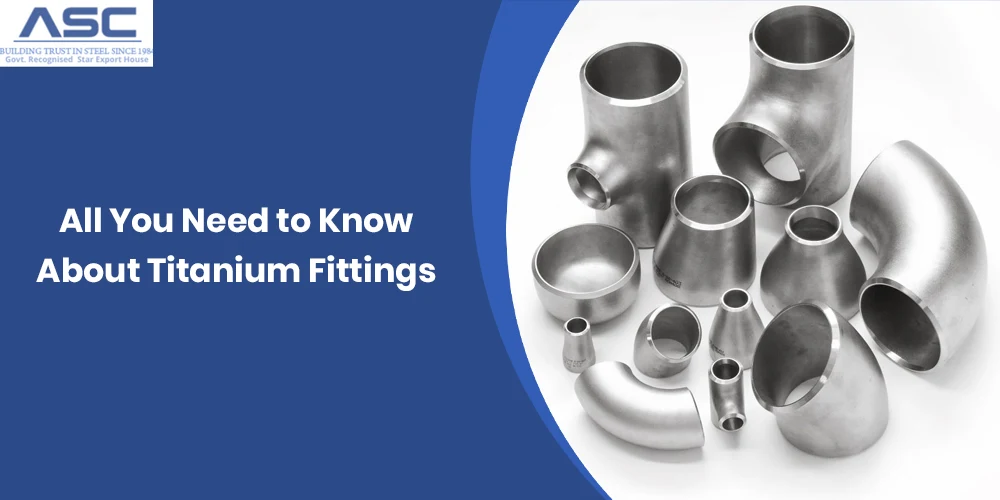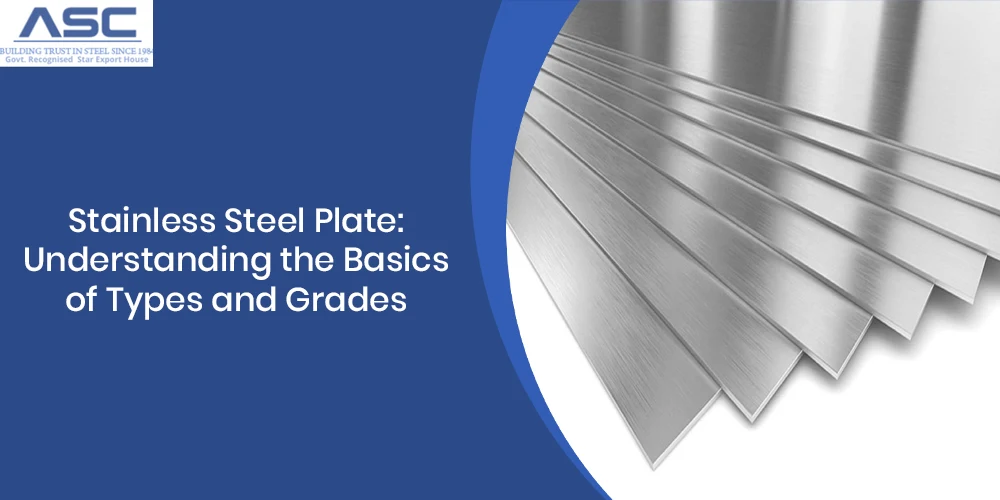Understanding Incoloy 825 Chemical Composition and Properties
by AMC
Posted on April 04, 2025 at 05:01 PM

Incoloy 825 functions as a nickel-iron-chromium alloy because it demonstrates exceptional resistance to numerous corrosive environments. The unique chemical composition of this material provides exceptional mechanical properties which drive many industries to use it in their applications. This blog delves into the intricate details of Incoloy 825's chemical makeup, material properties, corrosion resistance, applications, and comparative advantages.
What is Incoloy 825?
The nickel-iron-chromium austenitic alloy Incoloy 825 consists of substantial molybdenum and copper and titanium contents. The developers created this material to fight against oxidizing and reducing environments and provide exceptional corrosion protection in sulfuric and phosphoric acid solutions. The harmonious state of the alloy results from its stable operational qualities which remain consistent throughout different temperature ranges and operational environments.
Complete Chemical Composition of Incoloy 825
Incoloy 825 receives careful chemical composition engineering from development teams who wish to lead corrosion defense with enhanced mechanical properties. Below is a detailed breakdown:
- Nickel (Ni): 38.0–46.0%
- Iron (Fe): 22.0% minimum (approximately 33%)
- Chromium (Cr): 19.5–23.5%
- Molybdenum (Mo): 2.5–3.5%
- Copper (Cu): 1.5–3.0%
- Titanium (Ti): 0.6–1.2%
- Manganese (Mn): 1.0% max
- Carbon (C): 0.05% max
- Silicon (Si): 0.5% max
- Sulfur (S): 0.03% max
- Aluminum (Al): 0.2% max
Nickel Content and Its Role
Incoloy 825 contains nickel as its primary element because it represents 46% of the material composition. The high nickel content in Incoloy 825 creates exceptional resistance against chloride-ion stress-corrosion cracking which often damages industrial materials. Nickel strengthens the alloy's stability and toughness properties thus enabling it to handle demanding operational conditions effectively.
Chromium for Oxidation Resistance
The chromium content between 19.5% and 23.5% in Incoloy 825 creates its resistance to oxidizing agents. Incoloy 825 forms a protective passive oxide layer on its surface through this element that defends the alloy from various corrosion and oxidation damages especially in acidic environments.
Molybdenum for Corrosion Resistance
The alloy demonstrates better resistance against pitting and crevice corrosion when molybdenum levels fall within 2.5% to 3.5%. Molybdenum demonstrates exceptional corrosion resistance in reducing environments by protecting solutions that contain sulfuric and phosphoric acids.
Iron, Copper, and Other Elements in Incoloy 825
The alloy structure depends on iron because it functions as its basic structural element. The alloy's resistance to sulfuric acid and other reducing agents becomes stronger because it contains between 1.5% and 3.0% copper. Welding processes and their aftermaths benefit from titanium additions to the alloy because they shield the material from intergranular corrosion. Manufacturing stability and target characteristics of the alloy are achieved through precise quality control of trace elements manganese, carbon, silicon, sulfur and aluminum.
Incoloy 825 Material Properties: Strength, Hardness & Ductility
Incoloy 825 provides a set of mechanical properties which enable its use in challenging applications.
Mechanical Strength & Toughness
Under high-stress situations Incoloy 825 maintains its structural integrity because of its strong tensile strength and yield strength levels. The material possesses high resistance to mechanical forces which allows it to resist breaking under heavy loads.
Thermal Conductivity & Heat Resistance
The mechanical properties of Incoloy 825 remain useful for applications that reach temperatures below 1000°F (538°C). The material transfers heat efficiently through its thermal conductivity properties in industrial heat transfer operations.
Density & Hardness of Incoloy 825
The material density of this alloy reaches 8.14 g/cm³. The material strength level stops the material from wearing out and being deformed in harsh settings which allows for prolonged service lifespan.
Corrosion Resistance & Environmental Performance
The main strength of Incoloy 825 lies in its extraordinary ability to withstand numerous corrosive substances. The material demonstrates strong resistance against general corrosion together with pitting and crevice corrosion and intergranular corrosion and stress-corrosion cracking. The material finds exceptional value in industrial sectors that frequently encounter harsh chemical environments.
Applications of Incoloy 825 in Various Industries
Incoloy 825 demonstrates multiple desirable properties which make it a preferred material for various sectors.
Oil & Gas Pipelines
The oil and gas industry uses Incoloy 825 to produce downhole tubing and casing and wellhead components. The material maintains durability in tough extraction conditions because it shows resistance to stress-corrosion cracking and pitting.
Chemical & Power Plants
Incoloy 825 serves chemical processing equipment such as acid production and pickling equipment because it demonstrates excellent performance in harsh chemical environments. The alloy serves power generation applications through its use in equipment that handles nuclear fuel reprocessing and radioactive waste.
Aerospace & Marine Engineering
The seawater corrosion resistance of Incoloy 825 enables its application in marine systems including seawater-cooled heat exchangers and offshore piping systems and marine exhaust systems. The aerospace industry benefits from Incoloy 825 because it demonstrates excellent high-temperature stability and corrosion resistance properties for particular components.
Incoloy 825 Pipe – Features & Benefits
Incoloy 825 pipes have earned a strong reputation because they deliver outstanding results in harsh corrosive conditions. The main characteristics along with advantages of Incoloy 825 include:
- Corrosion Resistance: The material demonstrates outstanding resistance against oxidizing and reducing acids which enables it to handle sulfuric and phosphoric acids effectively.
- High-Temperature Strength: The material sustains its mechanical strength properties throughout high temperature operations which makes it appropriate for heat exchanger and processing equipment applications.
- Versatility: The product range of Incoloy 825 pipes includes seamless welded and fabricated forms which allows for multiple industrial applications.
The combination of properties in Incoloy 825 pipes makes them an ideal selection for industrial applications that need durable corrosion-resistant piping systems.
How Incoloy 825 Compares to Other Nickel-Based Alloys
The unique combination of properties in Incoloy 825 makes it standout among nickel-based alloys during evaluations:
- Versus Inconel Alloys: The high-temperature strength optimization of Inconel alloys cannot match the superior corrosion resistance along with mechanical properties which Incoloy 825 delivers across both high-temperature and aqueous environments.
- Versus Hastelloy Alloys: The corrosion-resistant properties of Hastelloy excel especially when operating in harsh environmental conditions. The lower cost of Incoloy 825 along with its sufficient corrosion protection capabilities and accessible market and simple fabrication methods makes it an attractive alternative to various applications.
The combination of advantages in Incoloy 825 enables its use as a cost-effective material solution for multiple industrial applications.
Advantages & Limitations of Alloy 825
Advantages
- Comprehensive Corrosion Resistance: This material successfully fights off corrosive agents from acids and seawater and many other corrosive substances.
- Thermal Stability: Retains mechanical properties across a broad temperature range.
- Fabrication Ease: Standard fabrication methods allow easy welding and processing of this material.
Limitations
- Cost Consideration: The material costs of Incoloy 825 exceed those of some stainless steels but the superior performance justifies the price difference.
- Not Suitable for Extreme Conditions: Specialized alloys designated as certain grades of Hastelloy become ideal for conditions that present both severe heat exposure alongside highly corrosive chemical solutions.
Conclusion: Why Choose Incoloy 825 for Your Applications?
Incoloy 825 provides both remarkable corrosion protection and superior mechanical power and heat resistance which makes it the best material for challenging industrial usage. The material demonstrates excellent adaptability to diverse situations because it can be easily manufactured while maintaining high performance characteristics. The selection of Incoloy 825 enables industries to achieve reliable operation together with extended lifespan and superior performance in their essential processes.
Choose Amardeep Steel Centre for your Incoloy 825 needs. Contact us today to learn how our high-quality Incoloy 825 products can improve your operations and provide lasting, reliable performance.

Understanding Copper Sheets: Benefits, Types, and Uses
The industrial preference for copper sheets persists because these materials provide outstanding electrical conductivity as well as thermal conductivity and corrosion

